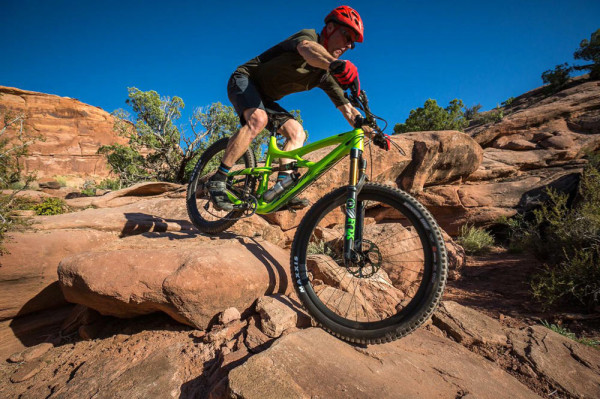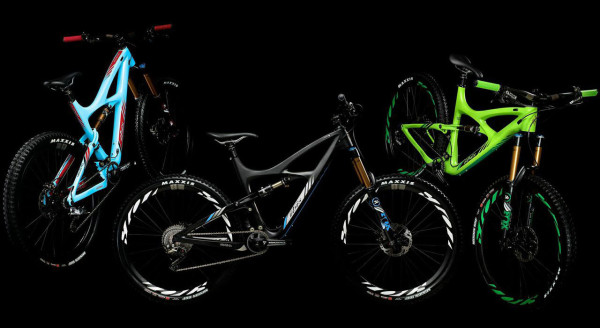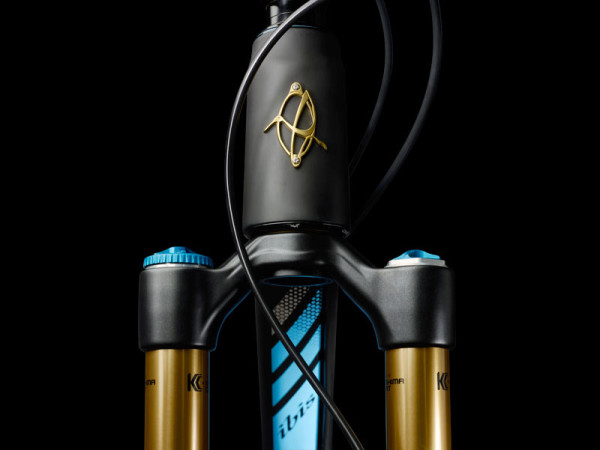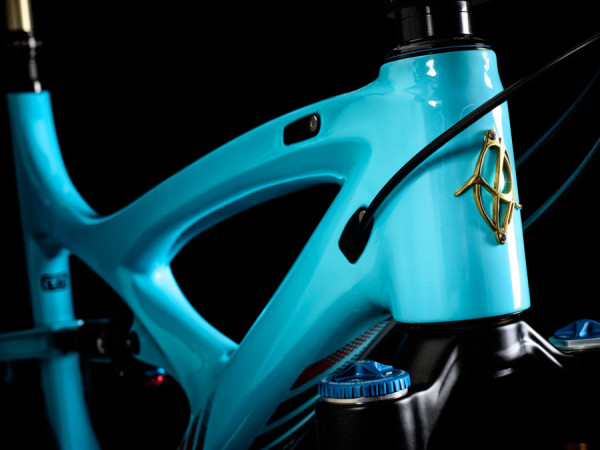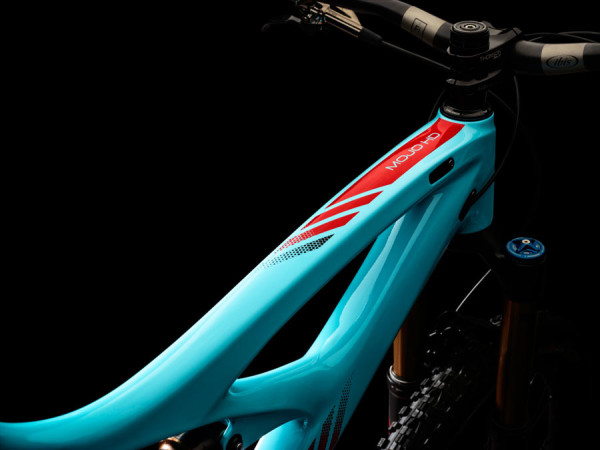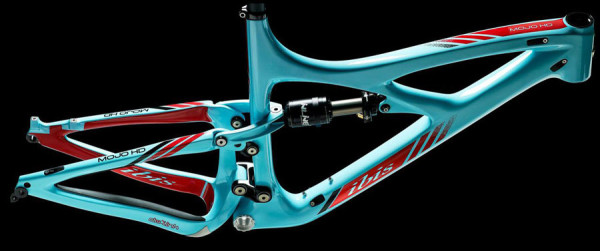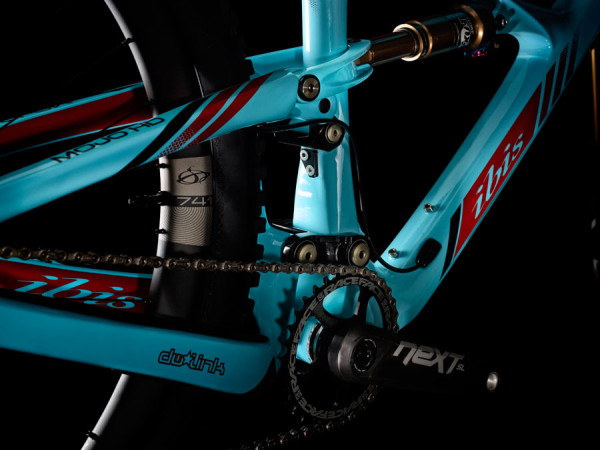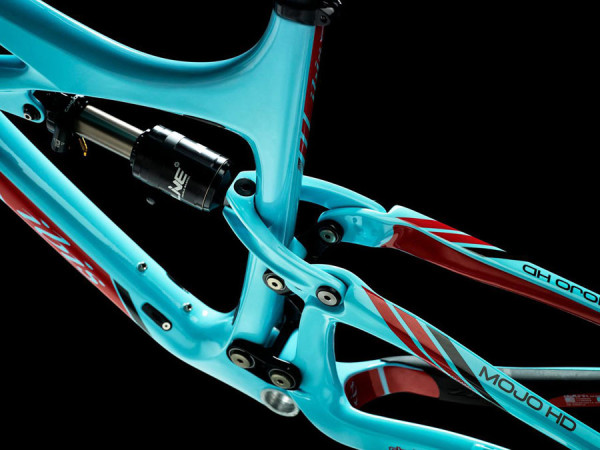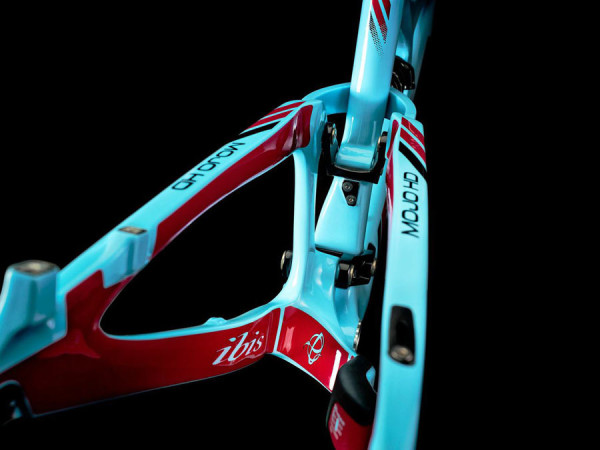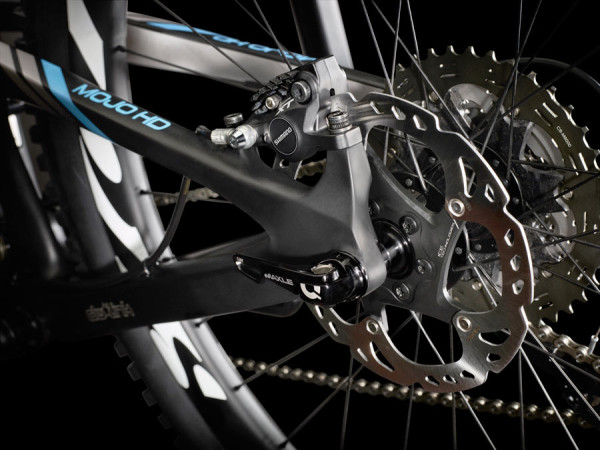The all-new, third generation Ibis Mojo HD3 takes the enduro scene to heart with a totally new frame designed from the ground up to climb quickly and descend quicker.
It’s built around the DW-Link suspension platform, but uses a new iteration of it to achieve 6″ of rear wheel travel with the peddling efficiency of their XC-oriented Ripley and the downhilling ferocity you’d expect from an aggressive six inch bike.
The basics are what you’d expect these days and include a tapered headtube, 142×12 rear thru axle, internal cable routing, removable front derailleur mount and, of course, 650B wheels. What makes it special is now you can have both the HDR’s longer travel and the HDR 650B’s bigger wheels. See how it all comes together with the new suspension, frame and geometry…
UPDATED: Additional comments from Ibis’ co-founder & owner, Scot Nicol, throughout the post.
The Mojo HD3 will come in three colors with a whopping nine build kit options. Or, you can get the frameset and build it up yourself. Either way, you have options on top of all that, too. Things like a Cane Creek Double Barrel Inline shock and polycarbonate downtube protector hop it up a bit. You even have fork travel options – it’s designed to work with a 150mm (5.9″) or 160mm (6.3″) fork.
New on the HD3 is the use of a Zero Stack 56 lower headset cup, which sits completely inside the frame. Not only does it look cleaner, but it lets them bring the headtube down just a bit more, which boosts overall front end stiffness.
Cable ports are ready for stealth dropper posts, with two options for routing. Run it through the downtube as shown here, leaving the top tube port open for a top-pull front derailleur. Or, if you’re going with a 1x, you can use the top tube port for your dropper post.
They even offer different port covers and cable stop options so you can run it with full length housing or interrupted housing to save about 55g.
The frame shape is similar to the 2014 Mojo HDRs, with swooping lines and oversized tube shapes to keep the frame both stiff and beautiful. Biggest change here is the top tubes are about 20mm longer per size.
Where it differs from prior models is the suspension’s linkage design and shock placement. Before, the upper pivots were closer to or in front of the seatpost and the lower linkages and pivots sat lower and were angled differently. From an aesthetic standpoint it may have been a bit cleaner before, but this new version has several benefits.
First, it makes room for a water bottle inside the front triangle. More importantly, Ibis says it completely separates the pedaling forces from suspension movement and it, along with the shock tune, creates a very linear compression curve. The result is a bike that feels like it has more travel with predictable action throughout the stroke.
“This is V5 of the DW-link, the latest iteration,” says Nicol. “From prior generations, it provides both better pedaling performance and increased small bump compliance. The real world result is that when climbing, you do not feel like you’re on a 6″ bike, but descending you’re surprised it’s only a 6″ bike. That’s the beauty of this V5 DW, Dave (Weagle) has effectively decoupled travel with climbing performance.”
To keep all that movement tight, the suspension uses dual row angular contact bearings on the drive side of the lower link. Ibis says they’ll have less play than standard sealed bearings, but won’t require preload adjustment. Opposite those are oversized 28mm x 15mm x 7mm radial bearings on the non-drive side.
It also sits higher in it’s initial travel, letting them use a low 13.4″ bottom bracket height, which lowers your overall center of gravity for rippin’ the corners without fear of pedal strikes.
Speaking of BB’s, they’re running a standard 68mm wide threaded bottom bracket shell with ISCG tabs. Bikes and frame will ship with an adapter to mount a chain guide, too!
Like the the Ripley, it uses a disposable mandrel core inside the frame during the molding process, giving them a rigid structure to wrap the carbon against. The result is a one-piece frame with no seams, so it’s stronger and lighter. The mold is melted out during the manufacturing process, so it’s not adding to the claimed 5.9lb frame weight (with shock).
By borrowing the clevis-style shock mount from the Ripley, they opened up the rear end a bit to improve tire clearance. Even with the linkage sitting mostly behind the seat tube now, there’s still room for 2.4″ tires while maintaining a fairly short 16.9″ (429mm) chainstay length.
The little black thing on the seat tube is the front derailleur mount cover, keeping it sealed up and tidy looking on 1x drivetrains.
Frames come with a Maxle thru axle and will fit up to a 200mm rear brake rotor.
Click to enlarge for Mojo HD3 geometry with both 150mm and 160mm forks.
Pricing starts at $2,900 for the frameset (frame and Fox Float CTD shock, add $67 for a Cane Creek headset and $60 for a DB Inline – both totally worth it). Complete bikes start at $3,950 for their Special Blend model, which gets an X-Fusion Sweep RL fork, Ibis’ ultra wide 741 carbon wheels and a Race Face/SLX/Deore drivetrain mix. From there, things go up to $9,200 for a full XTR 2×11 bike with Thomson stem, DB Inline shock and 741 carbon wheels. In between are all manner of XT, XTR, Xo1 and XX1 builds, each customizable to suit your needs. Build it up on their website’s configurator, then take your dream bike’s printout to your local bike shop to order it up.
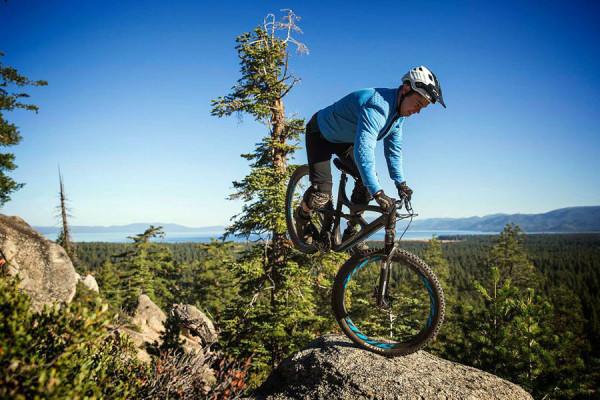
Spec rundown:
- 650b (27.5″) wheels
- 6” of rear wheel travel
- 5.9 lbs frame weight (large w/ shock and hardware, matte finish)
- 67º head angle with a 150mm fork
- 66.6º with 160mm fork
- 73º seat angle
- 16.9″ Chain stay length
- 160mm post mount rear brake
- 12 x 142mm Maxle rear axle
- Fox Float CTD Adjust Factory Series with Kashima Coat, 7.875″ x 2.25″, 175lb boost, med velocity, med rebound, LV can, .92in3 volume spacer,
- Optional shock: Cane Creek DBinline
- ISCG 05 compatible with removable adapter
- Threaded bottom bracket
- Internal dropper routing.
- Optional polycarbonate downtube cable guard
- Up to 2.4″ rear tire depending on brand and height of cornering knobs
- Bottom Bracket height 13.4″
- Removable direct mount front derailleur mount for a clean 1X look
Nicols told us that, seeing as it combines the best features of the HDR and HDR 650b, this bike effectively replaces both as they sell off remaining inventory. And it’s likely the Mojo SL will quietly go away, too, since few people are buying high end 26″ wheeled bikes any more.
